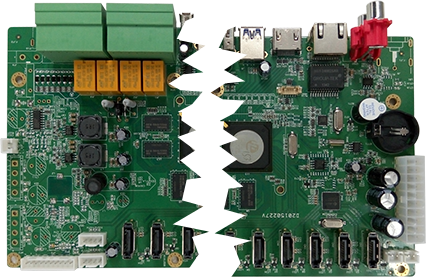Cool projects are rare. Here I found one I want to show to you. An undercover personal communicator. It includes a lot of new technologies: ESP32, Smartphones, LoRa, BLE, GPS, Mesh, and as you see, 3D printing. And it solves a problem which could be seen as a human right: Personal SMS style communication everywhere in the world, without the need for any infrastructure, and without mass surveillance. In addition, it shows the location of all your friends in your group on a map on your Smartphone. Everything open source, of course. How cool is that? Even “Sexycyborg” Naomi Wu likes it.
Security
Throwing Star LAN Tap
The Throwing Star LAN Tap is a passive Ethernet tap, requiring no power for operation. There are active methods of tapping Ethernet connections (e.g., a mirror port on a switch), but none can beat passive taps for portability. To the target network, the Throwing Star LAN Tap looks just like a section of cable, but the wires in the cable extend to the monitoring ports in addition to connecting one target port to the other.
The monitoring ports (J3 and J4) are receive-only; they connect to the receive data lines on the monitoring station but do not connect to the station’s transmit lines. This makes it impossible for the monitoring station to accidentally transmit data packets onto the target network.

Secrets of the Nintendo CIC Chip – Early Cartridge Anti-Piracy | MVG
To combat unlicensed games and win back confidence of retailers in North America and Europe, the NES and all licensed games came with a lockout chip known as the 10NES or CIC. In this episode we take a look at this chip , the clone chip that was developed by Atari and how it took 20 years for the homebrew community to reverse engineer the chip and the challenges they faced.
Qubes OS: Security Oriented Operating System
Qubes OS securely divides a user’s digital life into separate domains (or “qubes”) that are isolated in different virtual machines. This video covers Qubes OS system requirements, installation and setup, along with a demo including workspaces, copying data between Qubes, block device handling, and installing and accessing applications.
You can download and support Qubes OS at: https://www.qubes-os.org/
DNS Over TLS On pfSense 2.4.5
How to setup DNS over TLS on pfSense 2.4.5
Over 500,000 Zoom accounts sold on hacker forums, the dark web
Over 500,000 Zoom accounts are being sold on the dark web and hacker forums for less than a penny each, and in some cases, given away for free.
These credentials are gathered through credential stuffing attacks where threat actors attempt to login to Zoom using accounts leaked in older data breaches. The successful logins are then compiled into lists that are sold to other hackers.
Some of these Zoom accounts are offered for free on hacker forums so that hackers can use them in zoom-bombing pranks and malicious activities. Others are sold for less than a penny each.
Cybersecurity intelligence firm Cyble told BleepingComputer that around April 1st, 2020, they began to see free Zoom accounts being posted on hacker forums to gain an increased reputation in the hacker community.

How the Sony PlayStation PS1 Security was defeated | MVG
Swap Tricks, Hardware Mods, libCrypt, Cracking Groups, Spyro the Dragon 3 – Its all here. We go into detail about the mod-chip and piracy scene for the Sony PlayStation and how security on the system was defeated.
Full disclosure: 0day vulnerability (backdoor) in firmware for HiSilicon-based DVRs, NVRs and IP cameras
This is a full disclosure of recent backdoor integrated into DVR/NVR devices built on top of HiSilicon SoC. Described vulnerability allows attacker to gain root shell access and full control of device. Full disclosure format for this report has been chosen due to lack of trust to vendor. Proof of concept code is presented below.

How To Setup Snort on pfSense – Intrusion Detection & OpenAppID
In this tutorial, I will show you how to setup Snort intrusion detection & prevention System on pfSense. With Snort you can own your own IDS/IPS for your network security. Check out how to configure this great package in Pfsense. Setting up the Snort Intrusion Detection System On pfsense 2.4 With OpenappID / Layer 7 Open Application ID system.
